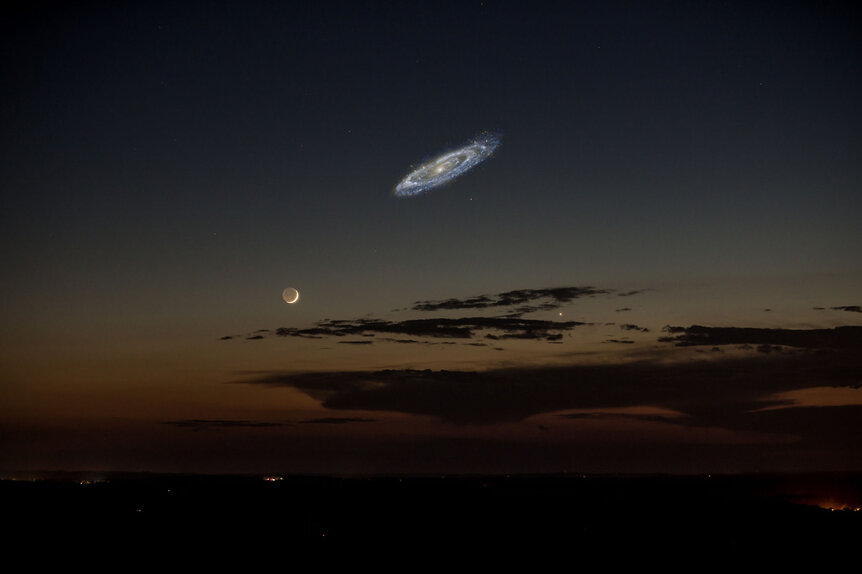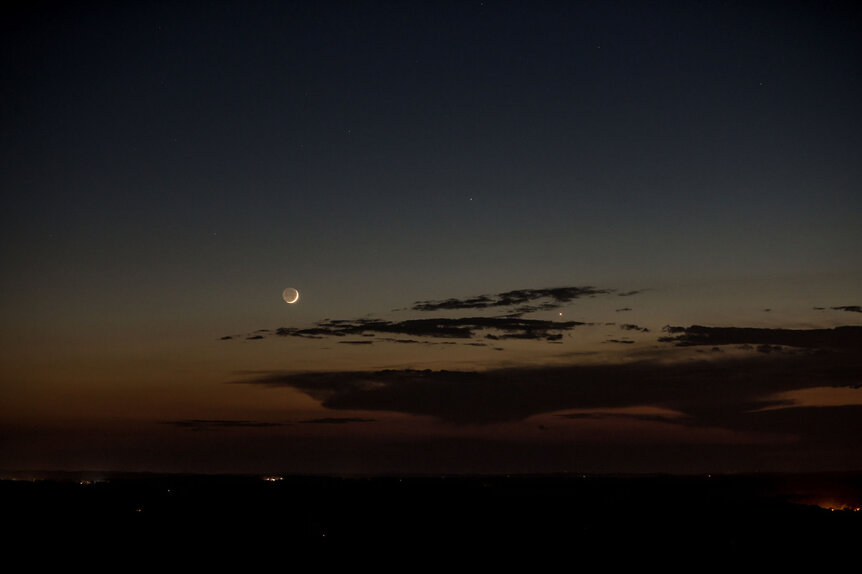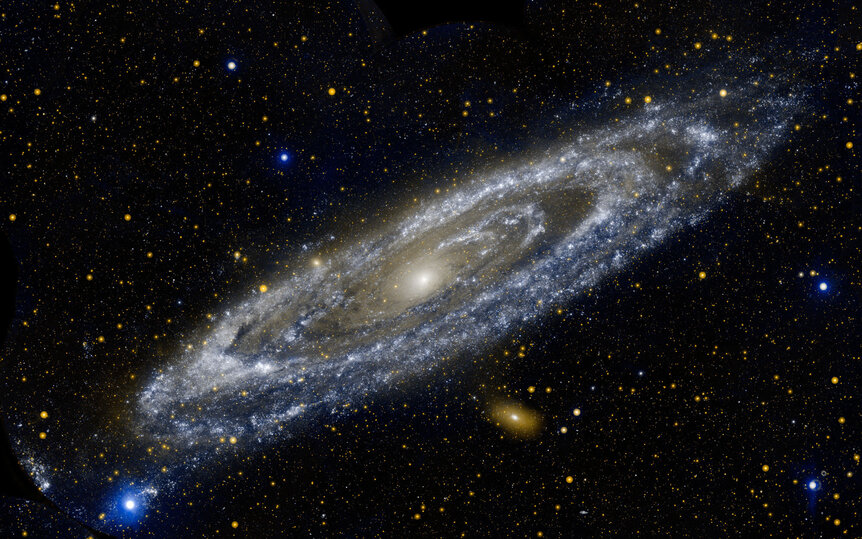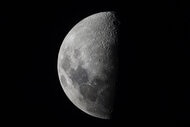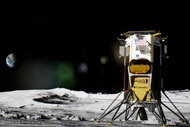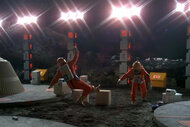Create a free profile to get unlimited access to exclusive videos, sweepstakes, and more!
Yes, That Picture of the Moon and the Andromeda Galaxy Is About Right
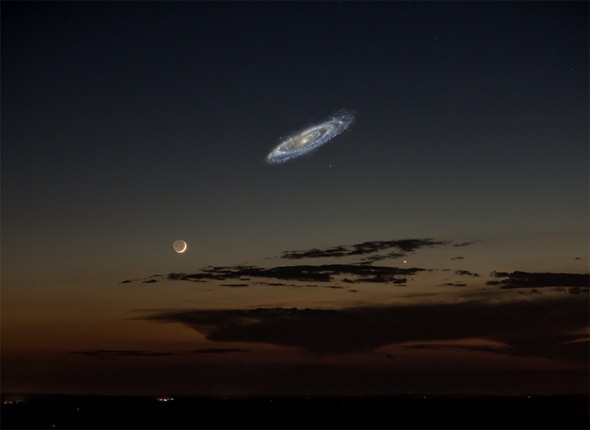
In my line of business — trying to spread the word about science and trying to grind anti-science under my heel — I post a lot of articles with the word "no" in the title. “No, There’s No Proof of a Giant Planet in the Outer Solar System”, “No, Mars Won’t Be as Big as the Moon. Ever.”, “No, the Earth (Almost Certainly) Won’t Get Hit by an Asteroid in 2032”, and “No, We Are Not in a Climate ‘Pause’.”
Sometimes I wind up having to debunk viral pictures or videos getting spread around, too, which are very difficult to extinguish. That's why I'm pretty happy to be able to write about one that's actually pretty much correct!
The picture shows the crescent Moon in the sky, and superposed near it is the Andromeda galaxy, the nearest big spiral to our own Milky Way. The caption varies from site to site, but generally says that this is how big the Andromeda galaxy would actually look in our sky if it were brighter. Here's the picture:
And I have to say, that looks about right to me! Andromeda is one of the very few galaxies you can see with your naked eye from a dark site. It's easy in binoculars, and if you use a small telescope, the galaxy fills the eyepiece.
However, that's just the core, the nucleus, of Andromeda. Like the Milky Way, Andromeda has vast spiral arms that extend well out from the core. From Earth, the galaxy appears to be more than 3 degrees across — remember, there are 90 degrees in a right angle, and 360 degrees in a circle; astronomers use angular size as a way to measure how big an object is on the sky.
The Moon is about 0.5 degrees across (about half the width of your thumb held at arm's length), so Andromeda is about six times bigger — roughly what's shown in the picture. It may not be exact, but I don't think it's that important that it be perfect. It's close enough, and certainly is an amazing thing to consider. After all, Andromeda is 2.5 million light years away — 25 quintillion kilometers* (15 quintillion miles)! It's about 140,000 light years across (the Milky Way is about 100,000 for comparison), so even at that forbidding distance it takes up a noticeable amount of real estate in our sky. The Moon is only about 3,500 kilometers across, but it's only 400,000 kilometers away. That's a four-day ride via Apollo, but still a lot closer than even a nearby galaxy.
I'll note I don't know where this picture comes from; I don't know who made the composite. [UPDATE (Jan. 2, 2014 at 18:15 UTC): The composite was created by Tom Buckley-Houston and posted to reddit.] A little sleuthing (using Google's reverse image search) revealed the original picture; the background shot shows the Moon, Venus, and Mercury, and was taken by Stephen Rahn on June 10, 2013. It's a lovely picture, showing the Earthshine glowing on the Moon's "dark side":
The Andromeda shot I recognized (being the king of astrodorks that I am) as an ultraviolet image from the NASA GALEX mission (see below). I love that image; it shows hot stars and huge clouds of star-forming gas in our neighboring galaxy. Here's another composite done by the NOAO with the Moon and Andromeda closer together to give you a sense of their relative sizes in the sky. (Edited to add: Because this shot is in the UV, which is invisible to our eyes, Andromeda wouldn't look exactly like this in the sky, but in fact the visible light images of it look pretty similar, so it's close enough for the point being made.)
I'll note that as I write this, on the first day of the new year of 2014, Andromeda itself is up and easy to see after sunset in the west for northern hemisphereans. By 8 at night it's about 60 degrees directly above the western horizon. WikiHow has a decent guide to finding it. Or you can seek out a local observatory or astronomy club; if the Moon's not up, I can guarantee they'll be looking at Andromeda during their public nights. Ask if you can see M31 (the official name of the galaxy; the 31st object in Charles Messier's catalog) for added geek points.
And there you go. Not all viral memes are bad, wrong, misguided, or dumb. Some are pretty much right on the money, and can actually lead to a "gee-whiz" moment, and to more knowledge and understanding. How about that? The Internet really is good for something after all!
*Correction, Oct. 31, 2015: I originally wrote that Andromeda is 250 quintillion kilometers away. What's a factor of 10 between friends?
